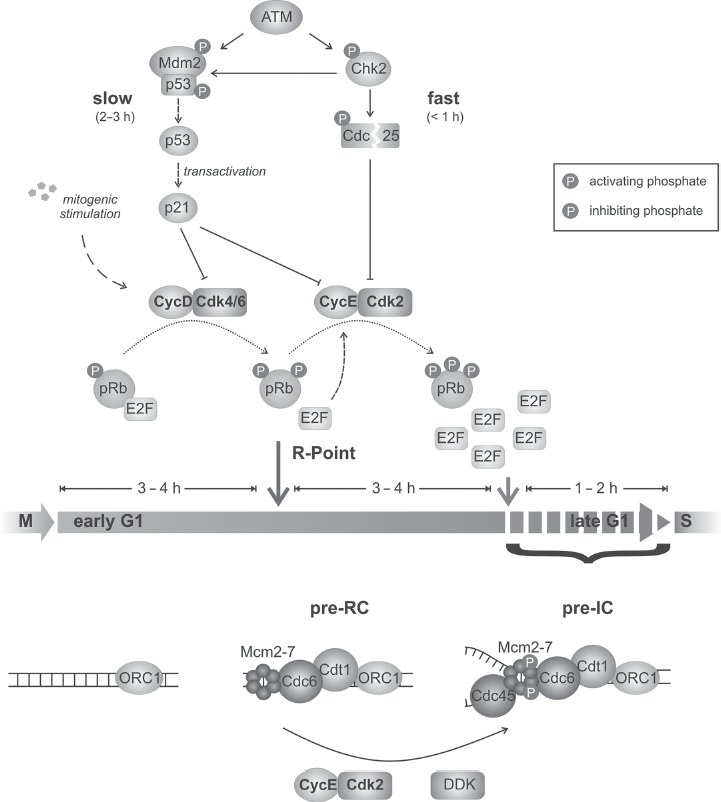Figure 1.

G1/S transition and G1/S checkpoint induction. The transition from G1 to S phase is initiated by the increasing mitogen-stimulated activity of CyclinD/Cdk4/6 which phosphorylates pRb resulting in the initial release of the E2F transcription factor. This activates a positive feedback loop rendering cell cycle progression independent of mitogenic stimulation, an event that has been termed restriction point (R-point; blue arrow). The feedback loop involves the upregulation of CyclinE which, in complex with Cdk2, further stimulates E2F release and the transcription of genes necessary for S phase. After full pRb phosphorylation, all E2F is released and cells are unable to respond to DNA damage via ATM-dependent checkpoint induction (red arrow). In parallel to pRb phosphorylation, replication origins are licensed and the pre-replication complex (pre-RC) is formed. Again, through the activity of CyclinE/Cdk2, Cdc45 is loaded onto the chromatin forming the pre-initiation complex (pre-IC) which is required for polymerase recruitment. After double-strand break (DSB) induction, two parallel checkpoint pathways target the activity of Cyclin/Cdk complexes (indicated in blue symbols). The slower pathway involves the stabilization of p53 and transcriptional upregulation of p21 which binds and inhibits the Cyclin/Cdk complexes. The faster pathway acts via the activation of Chk2 and the inactivation of Cdc25. Thus, inhibitory phosphates of the CyclinE/Cdk2 complex can no longer be removed. The indicated times are estimations and may vary considerably between cell types (see text for details). (See colour version of this figure online at www.informahealthcare.com/bmg)
